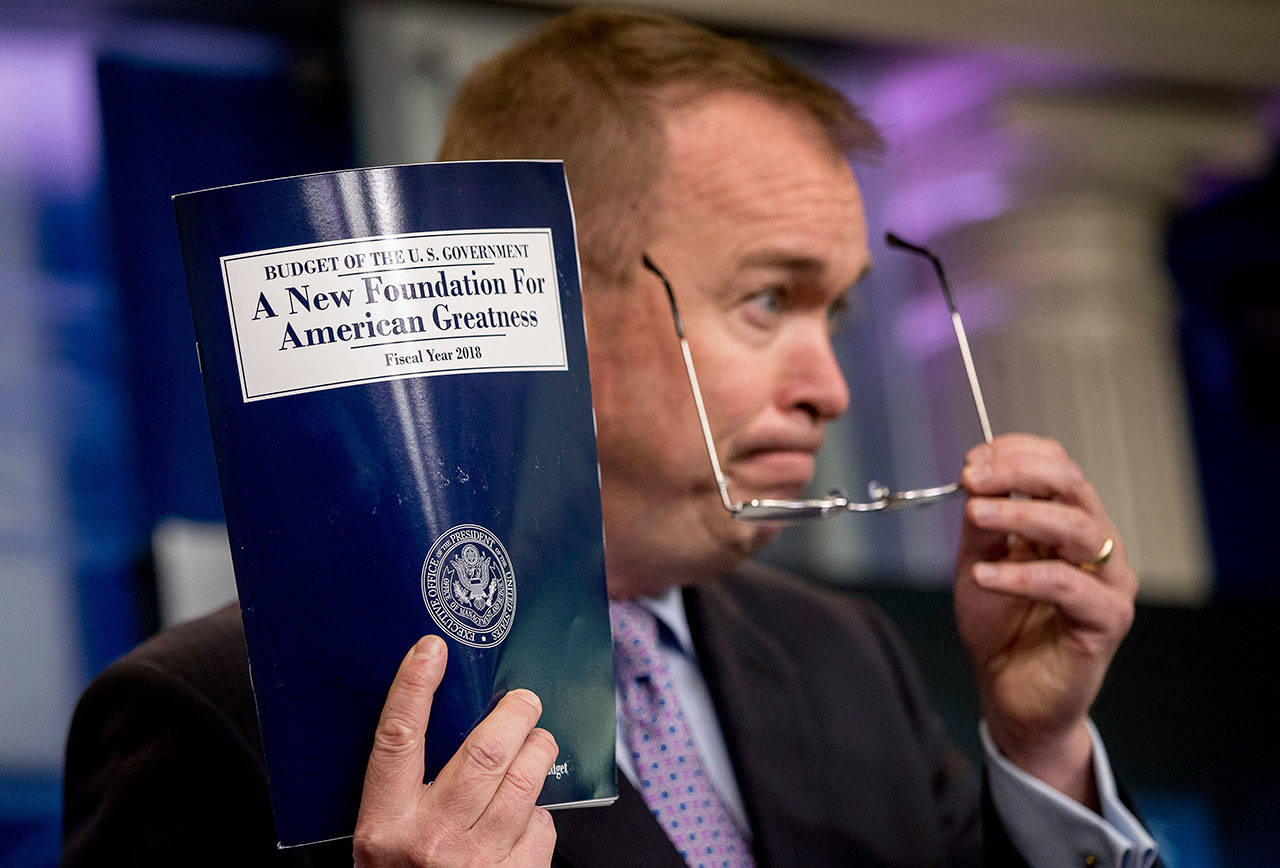By The Herald Editorial Board
Where to begin?
President Trump’s budget proposal to Congress — helpfully titled “A New Foundation for American Greatness” in case the public and lawmakers need any convincing — is such a cluster bomb of idealogical cuts to progams, unnecessary tax benefits for the rich and magical thinking, it’s difficult to know where to start.
We got a glimpse earlier of what the president’s full proposal would look like in March when the White House’s “skinny” budget was released. It showed plans to increase military spending an additional $52 billion, add $4.4 billion to expand veterans health services, provide $2.8 billion for the border wall and other Homeland Security programs and divert $1.4 billion for charter schools, private school vouchers and other school choice initiatives. Those increases were paid for with damaging reductions for 19 other federal agencies and other programs, the deepest at the State Department and EPA.
Previously we’ve outlined what those cuts would mean in Washington state and Snohomish County, with the elimination of federal cleanup funds for Puget Sound, complete elimination of the Community Development Block Grant programs and elimination and cuts to transportation initiatives.
The full budget only brings sharper focus to the cuts, details of which can be reviewed at The Washington Post’s website at tinyurl.com/WaPoTrumpBudget18.
To list just a few lowlights:
Cuts to food assistance for low-income families and individuals, including the Women, Infants and Children program; the Supplementary Nutrition Assistance Program (also known as food stamps); and Temporary Assistance to Needy Families.
Reduced availability of health services for women with elimination of Medicare reimbursements for non-abortion services provided by Planned Parenthood.
A decrease in funding for Medicaid that would deny nursing home and long-term care for some elderly poor and force some in Social Security’s disability program back into the workforce.
Cuts for funding for teacher training, after-school and summer programs.
Cuts to college education aid, such as Pell Grants and subsidized student loans.
Decreased funding for the medical research work of the National Institutes of Health.
Elimination of programs that help low-income seniors find work and closing of some Job Corps centers that help train young adults.
Cuts to loan guarantees and technical assistance grants for small business owners.
And deep cuts to the National Endowment for the Arts, the National Endowment for the Humanities, the Institute for Museum and Library Services and the Corporation for Public Broadcasting.
Trump’s budget adds insult with a forecast that his proposal would by 2027 balance the budget and reduce the national debt. To get there it rosily assumes the budget cuts and the reductions in taxes will spark sustained annual economic growth of 3 percent.
That’s an estimate of growth far more optimistic than can be expected, according to the Congressional Budget Office and others, including the nonpartisan Committee for a Responsible Federal Budget. The CRFB called such a level of growth, not seen since the 1990s, “highly unlikely … and not to be counted on.” The budget compounds the error by earmarking that expected growth to pay for the tax cuts themselves and to pay down the deficit at the same time.
President Trump’s budget director Mick Mulvaney justified the budget cuts with this:
“We’re no longer going to measure compassion by the number of programs or the number of people on those programs, but by the number of people we help get off those programs.”
Mulvaney is wrong on two counts.
He confuses booting people off anti-poverty programs as a method of ending poverty, as if eliminating assistance will end the need for assistance.
It represents a misunderstanding of the nature of poverty and the effectiveness of programs in lifting families and individuals out of poverty. Children in poverty, for example, who are provided assistance and an opportunity to do well in school and advance to college or training and careers are less likely to become adults mired in poverty.
And he’s wrong that compassion is what’s being measured; although compassion for a hungry child or low-income senior seems reason enough to offer it.
The goals of such programs — food stamps and other nutritional assistance, after-school programs, student loan aid, housing assistance, job training, help for small businesses, medical research, environmental protection and cultural enrichment — are the foundation for American greatness.
Congress, just weeks ago, largely rejected the president’s budget proposal for the current fiscal year and reached a reasonable and bipartisan budget agreement that provided for the nation’s military and security needs while preserve that foundation. It should take that path again.
Talk to us
> Give us your news tips.
> Send us a letter to the editor.
> More Herald contact information.

























